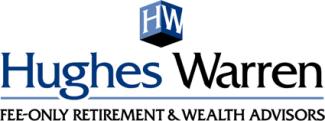
High Net Worth Families Need a Complete Risk Management Plan
Because there isn’t a one-size-fits-all plan that could possibly fit the unique needs of every family, risk management is a process that focuses on the problem of risk at every level of a family’s lifestyle in order to ultimately arrive at a solution for each. Each risk calls for separate measures, which usually require separate forms of insurance. Because risks at the higher levels often require specialized methods and tools, the process involves a collaboration of various experts working under a coordinated plan in order to develop the most efficient and effective risk management plan.
There are four primary steps to the risk management process:
- Identify and analyze loss exposures
- Identify and examine risk management alternatives
- Implement chosen risk management techniques
- Monitor and measure the risk management program to seek improvements and adapt to changes
Identify and analyze loss exposure
In analyzing loss exposures, each risk is examined from three vantage points:
- The value that is exposed to loss
- The peril that could cause the loss
- The probable financial consequences of the loss
This step in the process is carried out for each loss exposure - home, autos, collectibles, household employees, watercraft, professional liabilities, personal liabilities, family security, etc. Each loss exposure is analyzed in light of the family’s personal objectives for security and financial protection. Each will require its own safety measures, and each will require an individual risk management strategy.
Identify and examine risk management alternatives
Just as there is no one-size-fits-all plan for all families, there are no off-the-shelf risk management solutions for any particular loss exposure. Alternatives must be examined for their effectiveness and efficiency in meeting the specific criteria and needs of each family. Alternatives include risk control methods and techniques, as well as risk transfer through insurance. In most cases, the solution will include both, based on the balance the family wants to strike between reducing the risk (which can interfere with lifestyle choices) and transferring the risk (buying higher limits of coverage).
Select the best risk management technique(s)
Selecting the best risk management techniques will come down to choosing the ones that best fit the family’s lifestyle and provide the optimum level of protection. Equally important, any method selected needs to be integrated into the overall risk management plan to ensure that there are no gaps in coverage and that the family is not overpaying for coverage.
Implement chosen risk management techniques
As with any plan, implementation is the key to the success of a risk management plan. Strategies or techniques for each loss exposure must have their own implementation action plan. This might include installing equipment, contracting a specialist (i.e. cyber-security expert), a timeline, risk financing (insurance), and a system or process for monitoring. Again, each piece of the puzzle must fit together in a well coordinated program to ensure there are no overlaps and no gaps.
Implementation must also include a complete indoctrination of family members and trusted advisors in the strategies and techniques used, and a clear channel of communication established between everyone involved.
Monitor and measure the risk management program to seek improvements and adapt to changes
A risk management plan is similar to a financial plan in that changing circumstances could impact the effectiveness of the plan. With a high net-worth family, circumstances change as their net worth increases, or when they buy a bigger home or additional toys. Any change in lifestyle can present a new loss exposure that must be run through the risk management process.
In addition, existing strategies or techniques can always be improved, especially with advancements in technology. It is vitally important that an at-risk family continuously improve and upgrade their strategies because those who seek to harm or exploit them are always upgrading theirs.
*This content is developed from sources believed to be providing accurate information. The information provided is not written or intended as tax or legal advice and may not be relied on for purposes of avoiding any Federal tax penalties. Individuals are encouraged to seek advice from their own tax or legal counsel. Individuals involved in the estate planning process should work with an estate planning team, including their own personal legal or tax counsel. Neither the information presented nor any opinion expressed constitutes a representation by us of a specific investment or the purchase or sale of any securities. Asset allocation and diversification do not ensure a profit or protect against loss in declining markets. This material was developed and produced by Advisor Websites to provide information on a topic that may be of interest. Copyright 2021 Advisor Websites.

